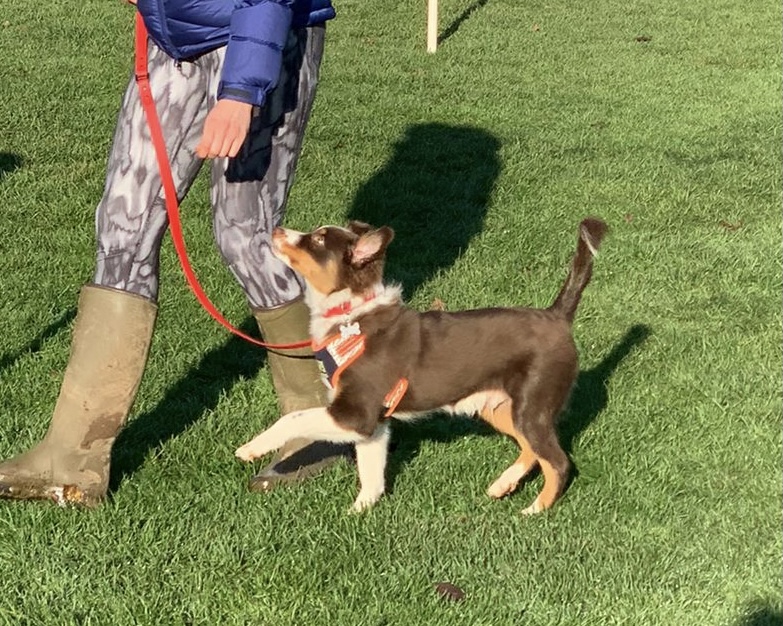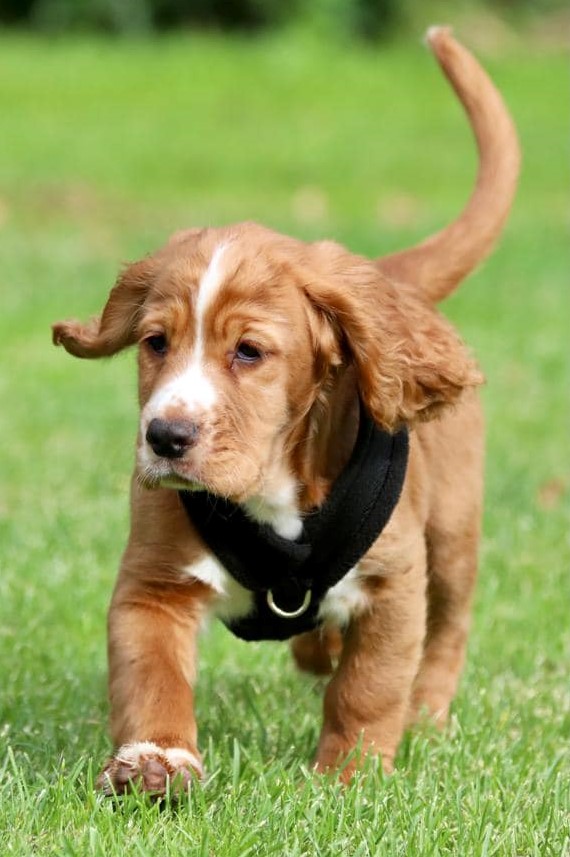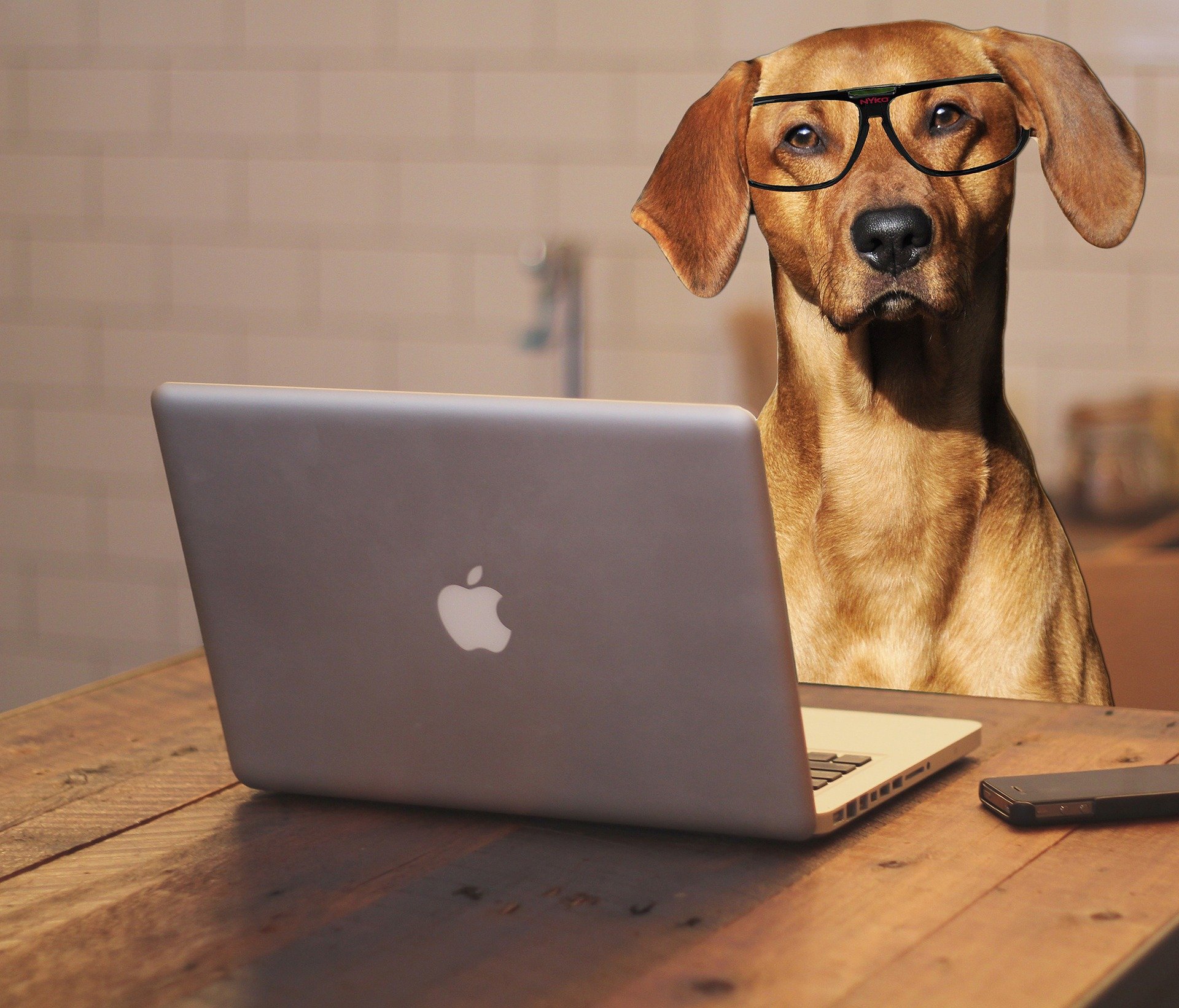This might seem a strange thing to advise to new puppy parents but it’s something we talk about in all our puppy training classes.
It’s strange because as a proud new guardian of a beautiful, cute puppy, the first thing you want to do when they have completed all their vaccinations, is take them for a walk. So, you bung a collar and harness on them, attach a lead and off you go. But wait, you’ve not taught them how to walk on a lead yet! But there is this expectation that puppies should learn how to walk nicely on the lead as soon as they step out the door.
Did you know that lead walking will be the hardest thing you will ever teach your puppy to do? Why is that?
It’s because it’s a completely unnatural behaviour for our dogs to perform without lots and lots and lots of training. Not only do they have to learn to stay close to you on a loose lead, but they also need to learn a whole knew pace as dogs don’t naturally walk/trot at the same speed that we walk.
Take all this into consideration and you can see why we advise not to take your puppy on a lead walk.

What happens is they learn how not to do it! They will zig zag all over the place, they will pull towards a good sniff/other dogs/people and all the while getting lots of reinforcement for doing it wrong. To begin with this doesn’t seem much of a problem because they are small and cute and need to be out to socialise right? The problem is puppies grow very quickly! One of the most common problems dog trainers get presented with is pulling on the lead, especially in adolescent dogs (basically overgrown, strong, puppies). And the main reason they are pulling is because they’ve been doing it since they first when out and about and have learnt this is the way we walk.
It’s a bit of a catch 22 as you want to get your puppy out to see and experience the world, but you also must have them on a lead for safety but as stated before they haven’t learnt how to walk on a lead in a place where they can learn and find it easy. Ever wondered why your puppy masters ‘sit’ within days of you bringing them home? It’s because a) you’ve trained it at home and b) it’s a pretty natural and to be honest, default behaviour (your puppy will sit all the time without you asking them, but I’ve never seen a puppy walk nicely on a loose lead all by themselves!).

So how do we solve this tricky situation? It’s simple really. To start with you separate your lead training from your walks. But hang on you just said we shouldn’t walk them. That’s true but what we mean is don’t lead walk them.
Instead, pop them in the car (hopefully you’ve done lots of work getting your puppy used to being in the car whilst you were waiting for them to be fully vaccinated 😊) and take them to somewhere you can have them on a longline or if safe, off lead. This way they can explore, sniff, and take in the world in a natural way without being restrained on a short lead which can also cause frustration. Having more freedom gives them choices to approach new things or more commonly, create space from things that initially worry them. It also gives you a great opportunity to reinforce your puppy for staying close to you because at this age they need you and will want to follow you (this doesn’t last long so make sure you reinforce it a lot!!).
Instead of thinking of walks as exercising your puppy, think of them as training opportunities to work on recall, proximity, connection, and bonding.
Then at home start working on your lead walk training. Teach them to give in to lead pressure and show them what you want to do on the lead i.e., stay close to you.
Once they have mastered it at home you need to proof it (train it in lots of different places). Dogs don’t generalise behaviours very easily unfortunately and add to that the many distractions out in the real world, proofing any behaviour can be a challenge, especially lead walking. You need to build the level of difficulty gradually. So, think of it like education levels. Training at home is like Nursery School and training at the local park would be University level. Don’t try and jump up the levels too quickly. Find a quite road or carpark and train there to start with. Once your puppy has nailed it there, then go up to the next level and so on.

Another way of helping your puppy to understand what is being expected of them is to use different equipment when your training e.g., back attachment of harness and longer lead = leisure/mooching mode and shorter lead attached to collar or front attachment of harness = training mode.
I will let you in to a secret. With my most recent puppy, I didn’t start lead walking out in the real world until he was 6 months old! You need to have realistic expectations and you need to be prepared to put the work in. And if you do, you will have stress free walks from then on 😊